Setting up a bog garden for carnivorous plants is an effective way to house a large number of plants with similar requirements. If done correctly, the bog garden will look quite natural, and the plants will thrive. What I provide below are hints and tips based on my experience with bog gardens in the Pacific Northwest (North Vancouver, B.C. to be specific). What worked for me may not work for others! If you live in the southern or more inland parts of the Pacific Northwest with less rain and more heat, your issues will shift from too much rain to a need to have large quantities of pure water for watering the bog in summer when there may be no rain at all.
Most of the images used on this page are of a bog near Portland, Oregon. Portland is warmer and not as wet as Vancouver, British Columbia.
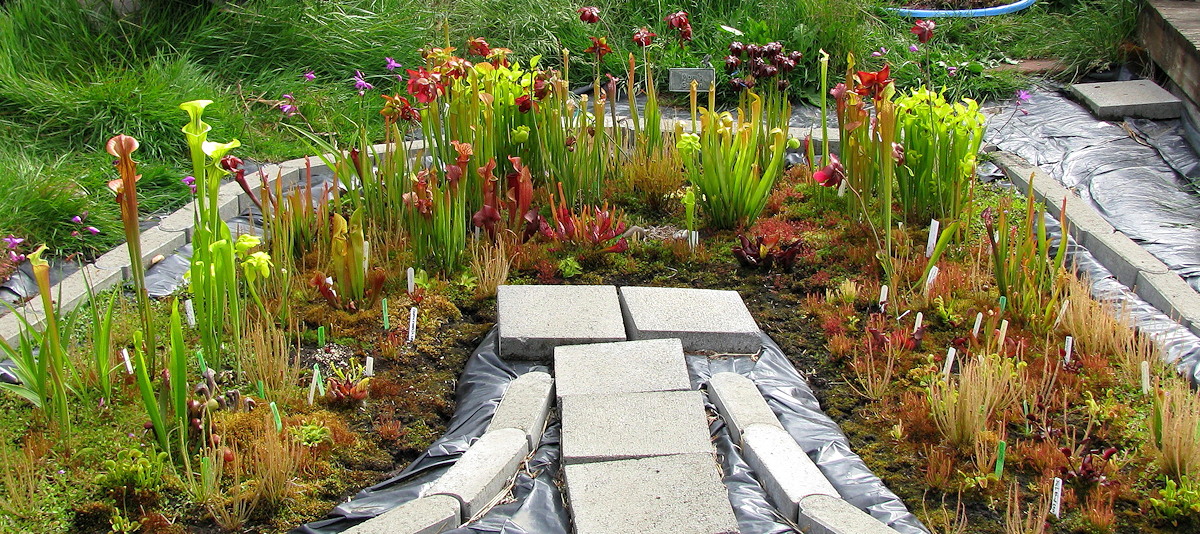
Djoni Crawford's bog located near Portland Oregon. Photo © Djoni Crawford.
Set-up
Setting up the bog is, I found, a relatively easy process. Location is everything though. Remember that once the plants are in place, it’s not as easy to move them to a sunnier/shadier location as compared to potted plants. The plants that do best in bogs in the Pacific Northwest are virtually all sun lovers, so pick a nice sunny location. The afternoon sun is nowhere near as hot or drying in this region as, say, in the prairies, so don’t worry if all you have to choose from is a west facing location.
One of the main concerns in this region is not excessive sunlight, but rather excessive rain. Anyone living on the west coast knows all about the persistent winter (and spring, summer, fall) rainfalls. A bog located in a low location can be flooded, sometimes washing out plants in the process (I speak from experience!). Choose even ground, or even an area where it slopes down away from the bog. Once you have decided on an appropriate area, and an appropriate size for the bog (bigger is better in all things related to housing plants), simply dig up the area and line it with your pool liner or plastic. While this is simple to state, it is a lot of menial “grunt” work, and your neighbours will likely either think you’re nuts, or you’re putting in a fish pond. If you are lining the bog with plastic sheeting, I’ve found that a deep bog works better than a shallow one. First, it provides better protection against drying out. Second, most cp have very deep roots, and will appreciate the extra depth. I recommend a depth of about one and a half to two feet.
The next step is to fill up the bog with your soil mixture. A 50:50 mix of peat moss and sand works well. Make sure to moisten it, and top off the soil mixture as it settles down over the next few days. Punch holes near the top of the liner to allow excess water to drain out. Again, during heavy rainfalls, flooding may occur, but as long as the bog isn’t the low spot, the flooding should be minimal.
You can finish off the bog with numerous decorative edging materials such as landscaping ties or cement blocks. You can even add decorative material to the bog itself, such as driftwood, or, if you really want, garden gnomes. Just make sure that whatever material you use in or around the bog is non-toxic to the plants, and won’t leach out any minerals or nutrients. In a similar vein, it’s a good idea to minimize fertilizers and pesticides used in your garden that may enter the bog.
Plant Selection
A wide range of plants are suitable outside year round in a bog garden in the Pacific Northwest. I experimented with numerous plants over the years, some working well, some not. If you have extra plants you can spare, I’d encourage you to try them in the bog to see how well they do. You may be surprised at the cold tolerance of many “tropical” cp.
Plants that I had success with included:
- Sarracenia (all species)
- Dionaea muscipula
- Drosera anglica
- D. filiformis (both subspecies)
- D. rotundifolia
- D. capensis
- D. aliciae
- D. spatulata (all members of this complex)
- D. binata (all members of this complex)
- D. intermedia
- D. arcturi
- D. regia
- Pinguicula vulgaris
- P. macroceras
- P. alpina
- P. grandiflora
- Southern U.S. Pinguicula (caerulea, lutea, etc.)
- Utricularia sandersonni
- U. bisquamata
- U. livida
- North American aquatic Utricularia (intermedia, macrorhiza, minor, purpurea, etc.)
- Cephalotus follicularis
- Mexican Pinguicula (moranensis, agnata and other more water loving species)
I found one of the key similar characteristics that many of these plants shared was the presence of an extensive, thick underground storage system either in the form of a rhizome (as for the pitcher plants) or roots (as for many of the sundews). A few other plants fellow enthusiasts had (moderate) success with in their bog gardens in Vancouver included Drosophyllum and some of the pygmy sundews.
One obvious omission to the above list is Darlingtonia californica. While this plant is native to the Pacific Northwest, I never found it did well in bog conditions. It prefers to have its roots much cooler and to be out of sunlight. This is rarely the case with a bog. While Darlingtonia will do very well in pots in north facing areas, I would not recommend them for the bog.
When planting the bog, place the plants in such a way that allows the smaller ones to be seen easily, not hidden between larger plants. Also ensure you plant somewhat randomly. Nothing looks more unnatural than plants in rows. This is a bog, not a vegetable garden! Maintenance of the bog is a relatively simple affair once all the plants are settled in and growing. Make sure to trim off all dead growth. This not only makes the plants look better, but also prevents growth of fungus which can be deadly during the cool, dark, wet winters.
You’ll need to water the bog during the summer, the frequency of which depends on the depth of the bog. A top layer of live sphagnum moss works well as an indicator of moisture; when dry, it’s time to water. During the winter I rarely, if ever, watered my bog. The dormant plants don’t need it, and nature provides enough rain for their needs during this time. I won’t go into a discussion on pollination, but I will say that if the plants are healthy, allowing them to flower won’t reduce their vigour in any noticeable way.
Problems
There are several common problems (common to the Pacific Northwest anyways) that you’re likely to run into with the bog. These can be lumped into two large categories: weather and animals.
As I’ve already mentioned several times, the Pacific Northwest has a lot of rainfall, especially in winter where you can go for weeks without a sunny day. In January, rains of near monsoonal proportions are common, and this can be rough on the plants. In reality, since the plants are dormant during the winter, the biggest threat is being flooded out and carried away. The biggest problems are the rains in late spring when the plants are in full growth mode. The pounding rain tends to beat down smaller plants, splatter plants with soil, and can damage delicate parts of larger plants such as flowers. In nature, these plants are generally protected from the rain by tall grasses and small shrubs. However, this is less than ideal in the home bog, as then you don’t get to see the plants! The solution I came up with was to put a sloped cover over the bog (rigid plastic sheeting works well. Do not use poly plastic as it’s not tough enough). While this protects the plants from the rainfall, it does mean having to water more often.
The second major problem are animals. I’m talking critters from small invertebrates to large mammals. I won’t go into details on common plant pests, such as aphids, scale, and thripes, as these are all covered off well by other people. I will focus on fauna that is more common in the Pacific Northwest. I’ll start with the smallest and move up to the largest.
Slugs and Snails
These little lovelies are very common in the wet climate of the “wet” coast. Both have a ravenous appetite for plants, mowing down sundews and chewing off the flowers of prized Sarracenia. I never did find an effective method of controlling them, just ways of minimizing their damage. This included putting out saucers of beer (they crawl into the beer and drown), lining the outside of the bog with copper wire (slugs and snails won’t cross a line of copper) and putting out saucers of slug and snail bait (buy the pet friendly brand). Another control, or rather, discouragement method is to keep the grass nice and short and remove any piles of yard waste away from the bog.
Strawberry weevils
This may or may not be a pest you’ve encountered. I only had them briefly, and while not a Pacific Northwest phenomenon, they do seem to be more common in this region. Strawberry weevil damage is apparent as notches in the ala (wing) of Sarracenia or Darlingtonia pitchers. While the adults do the above ground damage, it is the larvae that are the most destructive. Adults drill a hole into the rhizome of the pitcher plants and lay their eggs in the rhizome. The larvae hatch and feed on the rhizome and roots. Eventually, the plant dies from lack of watering, as the root system is gone and the plant is doomed.
If you notice any damage to your plant, you must take immediate action to prevent the laying of eggs and hatching of larvae. What you need to do is go out about one hour after dark, as the adults hide underground during the day. With a flashlight, shine it on the plants, pick off the adults and dispose of them. This should be done nightly over the course of a week to ensure they are all removed.
Squirrels, Raccoons and Skunks
All three of these small mammals are very common in the Pacific Northwest, and can cause a lot of havoc in the bog. Squirrels love digging in the bog to bury nuts and, as I found out, have an acquired taste for VFT bulbs! Raccoons and skunks also love digging around in the bog, looking for worms, grubs and other invertebrates. While all three really don’t do much direct damage to the plants (with the exception of the squirrel’s eating VFTs!), they do make a huge mess of the bog which can be extremely frustrating.
Attempts at keeping these critters out with methods such as predator urine, electric fencing, loud music, and so forth are generally ineffective. Most of these critters are very well adapted to living amongst humans, and feel little fear of human created diversions. The only effective method of keeping them out is through complete exclusion. A tight fitting frame of chicken wire worked well for me.
Now, you’re probably thinking “chicken wire fenced frame with a plastic cover on top? I’m sure that’s attractive.” I won’t try and hide the fact that this is definitely not the most aesthetic look for your bog. I made my frame so that it was easily removable (it should be so that you can get at the plants) and would leave it off when I wanted to admire or show off the plants. Otherwise, you just have to get used to the look, and the fact that your neighbours will think you’re harbouring livestock.
Bears
In my neighbourhood, black bears were a common visitor. They thankfully left the bog alone, but if they want in, I don’t think there’s much you can do to convince them otherwise. A few tips are to keep garbage and yard waste away from the bog, keep the yard clean (especially if you have fruit trees), and clip off any pitchers that are overloaded with insects which are rotting. If there’s nothing to attract the bear to your bog, they won’t bother with it.
Summary
These are some of my experience with bog gardens for carnivorous plants in the Pacific Northwest. It really is something to experiment with over time, as your conditions will likely be different from mine. Hopefully the above helps you avoid some of the more common pitfalls, and gives you ideas on dealing with some common problems of setting up a bog garden.
Chris Teichreb
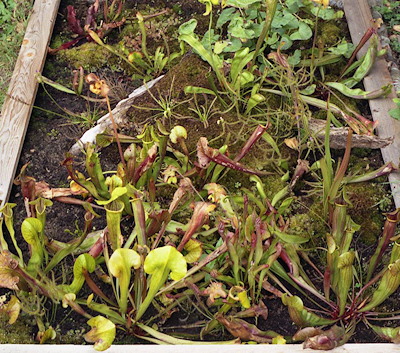
Chris Teichreb's bog. Photo © Chris Teichreb.
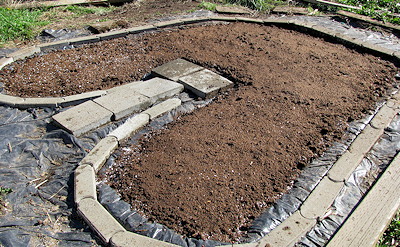
Bog newly refreshed with peat and perlite. Photo © Djoni Crawford.
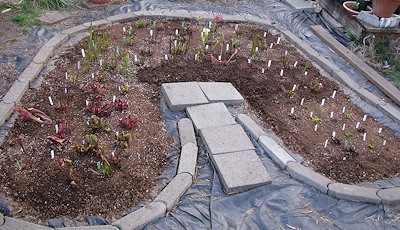
Newly replanted bog. Photo © Djoni Crawford.
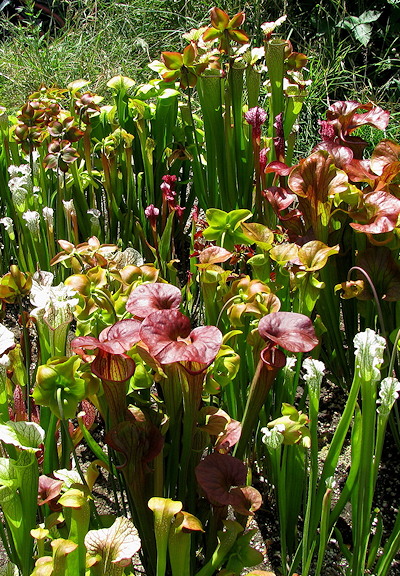
Mass of Sarracenia. Photo © Djoni Crawford.
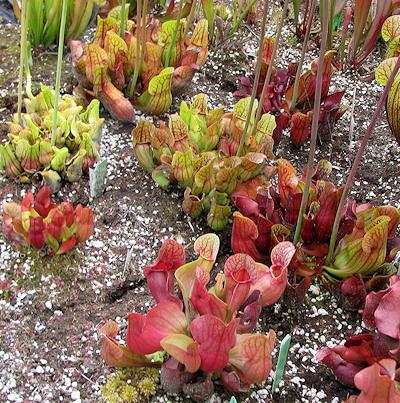
Various Sarracenia purpurea forms and Sarracenia rosea. Photo © Djoni Crawford.
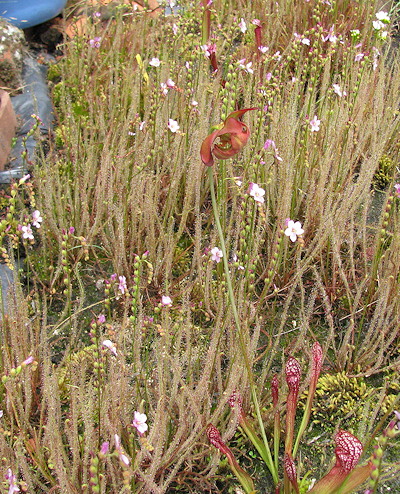
Drosera 'Portland Sunrise' taking over a bog. Photo © Djoni Crawford.
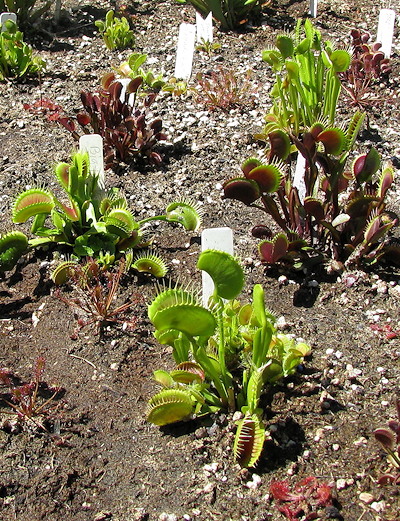
Dionaea muscipula planted a little far apart. But that was before the Drosera capensis took over. Photo © Djoni Crawford.
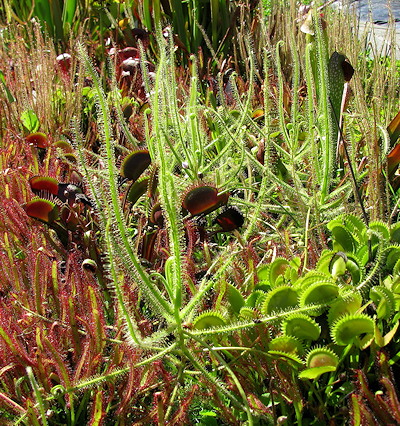
Drosera finlaysoniana growing as an annual among Drosera capensis and Dionaea muscipula. Photo © Djoni Crawford.
